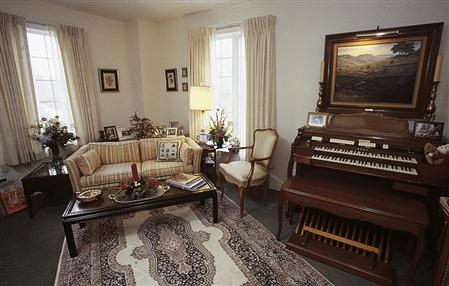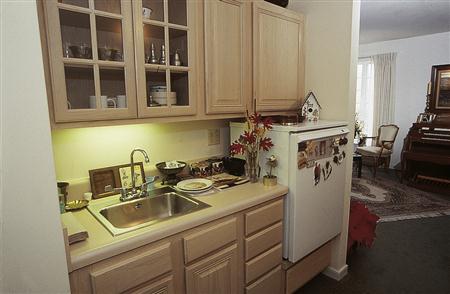Assisted living
Objectives
• Define the key terms and key abbreviations listed in this chapter.
• Identify the purpose of assisted living.
• Identify the person’s rights.
• Identify the types of assisted living residences and the living areas offered.
• Describe the physical and environmental requirements for assisted living.
• Describe the requirements for assisted living staff.
• Describe the requirements for persons who want to live in an assisted living residence.
• Explain the purpose of a service plan.
• Explain how to assist with housekeeping and laundry.
• Identify food safety measures.
• Explain how to assist with drugs.
• Identify the reasons for transferring, discharging, or evicting a person.
Key terms
assisted living A housing option for older persons who need help with activities of daily living yet wish to remain independent as long as possible
medication reminder Reminding the person to take drugs, observing them being taken as prescribed, and charting that they were taken
service plan A written plan listing the services needed by the person, how much help is needed, and who provides the services
KEY ABBREVIATIONS
| AD | Alzheimer’s disease |
| ADL | Activities of daily living |
| ALR | Assisted living residence |
Many older people cannot or do not want to live alone. Some need help with self-care. Some have physical or cognitive problems and disabilities (Chapter 44). Still others need help taking drugs. Yet these people do not need constant care.
Assisted living offers quality of life with independence, companionship, and social involvement. Assisted living is a housing option for older persons who need help with activities of daily living (ADL) yet wish to remain independent as long as possible. Little or no medical care is provided. Housing, personal care, support services, health care, and social activities are provided in a home-like setting. Assisted living usually offers these services:
• Help with ADL—bathing, dressing, grooming, toileting, eating, walking
• Housekeeping and maintenance
• A 24-hour emergency communication system to use for an emergency or to call for help
• Social, educational, recreational, and spiritual services
• Help with shopping, banking, and money management
• Exercise and wellness programs
• Medication (drug) management or help taking drugs
• Supervision for persons with Alzheimer’s disease (AD), dementia, and other disabilities
Living areas vary. A small apartment has a bedroom, bathroom, living area, kitchen, and laundry area (Figs. 30-1 and 30-2). Some people just want a bedroom and bathroom. Box 30-1 lists the requirements and features of assisted living units. Box 30-2, p. 466 lists environment requirements.
Assisted living residences (ALRs) also are called assisted living facilities (ALFs). Some are part of retirement communities. Others are separate facilities. State laws and licensing requirements for ALRs vary. Resident’s rights are part of such laws.
See Promoting Safety and Comfort: Assisted Living.
Purpose
People choose assisted living for many reasons. People are living longer, and there are more older people than before. Men and women lose life partners through death or divorce. Some remarry; others do not. Some persons have never married. Today’s older persons had some birth control options. Many had small families. And the United States is a mobile society. Children grow up and move away from their families. For these reasons, many older persons live alone. Often there is no family nearby to help them.
ALR residents
ALR residents usually need some help with one or more ADL:
ALR residents do not need 24-hour nursing care. And they are not bedridden. Some persons have chronic illnesses or are cognitively impaired.
Mobility is often a requirement. The person walks or uses a wheelchair or motor scooter. The person must be able to leave the building in an emergency. Stable health is another requirement. Only limited health care or treatment is needed.
Resident rights
ALR residents have rights and liberties as United States citizens. They also gain special rights under state laws and rules (Box 30-3). If unable to exercise his or her rights, family members, legal representatives, or ombudsmen act on the person’s behalf.





